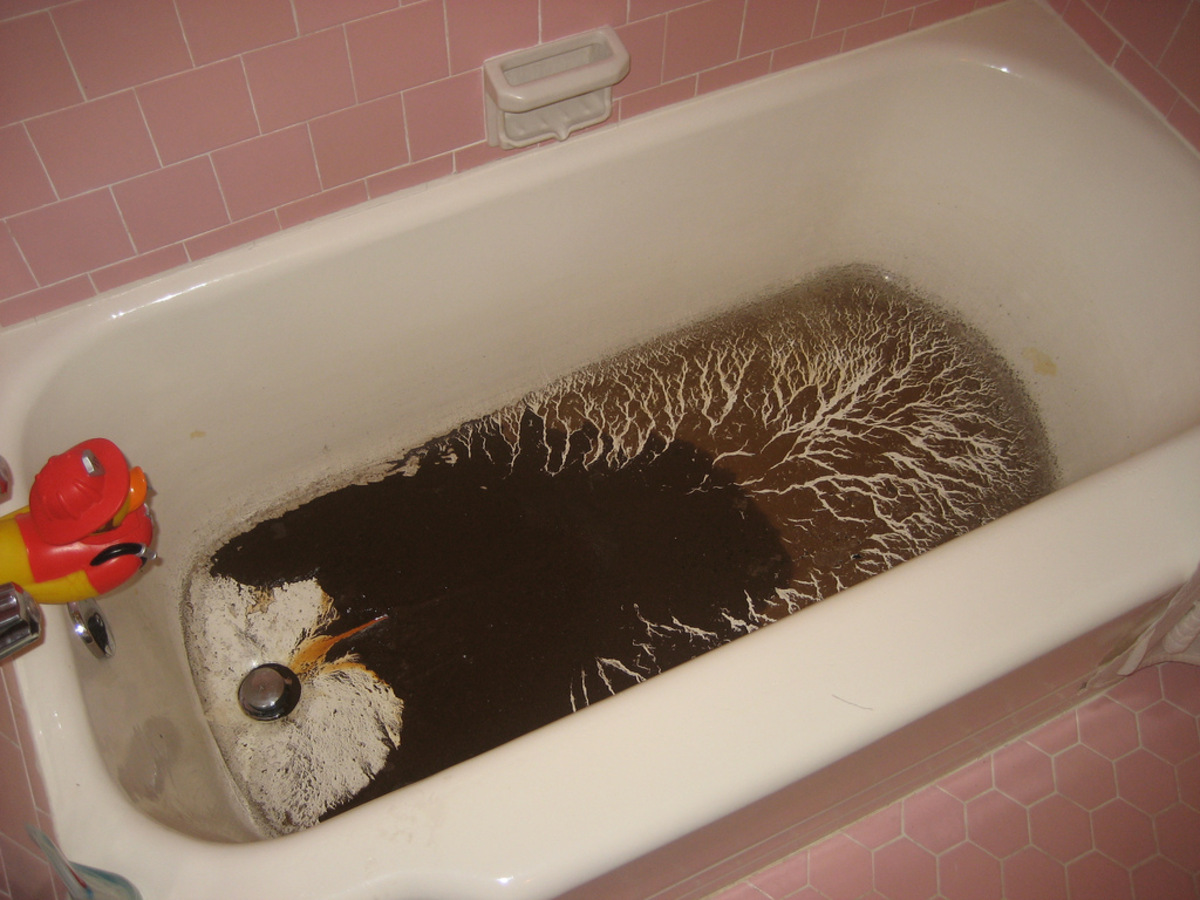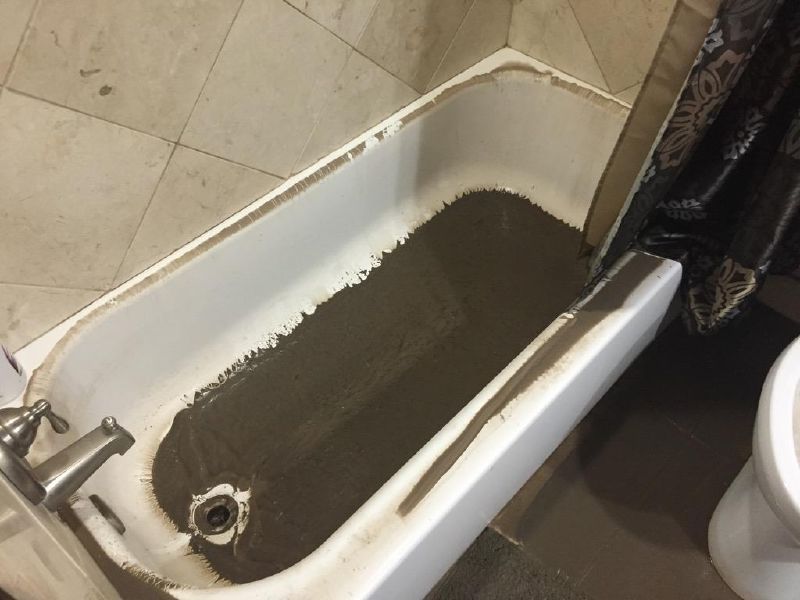The publisher is making a number of great points about Why is Sewage Backing Up Into My Bathtub? overall in this article followed below.

Sewage back-up in the bath tub can be a stressful and unhygienic problem for any homeowner. Not just is it troublesome, however it also poses severe health and wellness risks and shows underlying issues with the plumbing system. Comprehending why sewer is showing up through the bath tub is crucial for taking proper activity to deal with the trouble properly.
Introduction to the Concern
Comprehending the Problem
When sewage starts backing up right into the tub, it's a clear indication of an issue with the drain system. The wastewater that ought to be flowing away from your home is instead locating its way back into your home, which can bring about substantial damage and health hazards.
Possible Causes
Numerous variables can add to sewer back-up in the bath tub. From clogs in the sewage system line to concerns with the plumbing infrastructure, identifying the origin is crucial for finding a solution.
Usual Factors for Sewage Back-up
Obstructions in the Sewer Line
One of one of the most usual causes of sewage back-up is a clog in the sewer line. This can occur because of the accumulation of particles, oil, or international items in the pipes, avoiding proper circulation and creating sewage to back up right into your tub.
Tree Root Intrusion
Tree origins seeking dampness and nutrients can infiltrate drain lines through small splits or joints. Gradually, these origins can expand and increase, causing considerable damages to the pipelines and resulting in sewer backup problems.
Aging Framework
Older homes might have obsoleted plumbing systems that are much more at risk to deterioration, fractures, and deterioration. As pipes age, they end up being extra prone to leakages and blockages, boosting the likelihood of sewage backup cases.
Heavy Rainfall or Flooding
During durations of heavy rainfall or flooding, the drain system might come to be overloaded with excess water, creating back-ups and overflows. This can lead to sewer supporting right into bath tubs and various other components inside the home.
Health And Wellness Risks Related To Sewer Back-up
Contamination of Water
Sewer backup can infect the supply of water in your home, presenting a severe wellness danger to you and your household. Exposure to polluted water can bring about intestinal problems, skin infections, and various other diseases.
Spread of Disease
Sewage contains harmful microorganisms, infections, and parasites that can cause a variety of diseases, consisting of liver disease, cholera, and gastroenteritis. Coming into contact with sewage or contaminated surface areas puts you in danger of infection.
Mold Development
Dampness from sewer backup can develop ideal conditions for mold development in your house. Mold spores can intensify respiratory issues and trigger allergic reactions in delicate people, making timely clean-up vital.
Indications of Sewage Back-up
Foul Odors
Undesirable odors rising from drains pipes or fixtures, specifically in the bathroom, might indicate sewer back-up issues. These smells are often solid and relentless, signifying a trouble that needs instant interest.
Slow Draining Fixtures
Bathtubs, sinks, and toilets that drain slowly or otherwise in all could be experiencing sewer backup. If numerous fixtures are influenced concurrently, it's likely that the problem stems from a typical point, such as the main drain line.
Gurgling Noises
Odd gurgling or gurgling noises coming from drains pipes when water is running somewhere else in the house are a sign of air entraped in the plumbing system. This air buildup can arise from sewer backup and ought to be explored promptly.
Immediate Actions to Take
Shutting Off Water
In case of sewage backup, it's necessary to turn off the water supply to stop more contamination and damage. Situate the major water shutoff valve in your home and shut it off till the issue can be fixed.
Getting In Touch With a Specialist Plumber
Taking care of sewer backup is not a DIY task. Call a certified plumber with experience in managing sewage-related concerns to assess the situation and carry out needed fixings or cleanings.
Preventing Contact with Infected Water
Up until the sewer backup is resolved, stay clear of contact with polluted water to avoid the spread of germs and pathogens. Use protective gear if you should remain in the afflicted area and wash your hands extensively afterward.
Preventive Measures
Routine Maintenance of Drain Lines
Arrange regular assessments and upkeep of your drain lines to determine and deal with potential concerns prior to they intensify into major troubles. This can consist of clearing out debris, inspecting for tree origin invasion, and repairing any kind of damaged pipelines.
Installing Bayou Shutoffs
Think about mounting bayou valves in your plumbing system to stop sewage from receding into your home throughout periods of heavy rainfall or flooding. These shutoffs automatically close when water draws back up, safeguarding your home from contamination.
Correct Disposal of Home Waste
Prevent purging anything other than toilet tissue and human waste down the toilet to avoid obstructions and clogs in the sewage system line. Dispose of grease, oil, and other family chemicals properly to reduce the threat of plumbing troubles.
Cleaning Up After Sewage Backup
Disinfection Procedures
Completely decontaminate and disinfect affected areas after sewage backup to eliminate hazardous germs and stop mold and mildew development. Use proper cleansing products and protective gear to ensure safe and effective cleaning.
Reconstruction of Influenced Locations
Repair any type of damages to flooring, wall surfaces, or components brought on by sewer backup. Depending upon the extent of the damages, you may need to replace carpeting, drywall, or various other materials to recover your home to its pre-loss problem.
Why Is Water Backing Up in My Bathtub When I Flush My Toilet?
What to do about a sewer line clog
First, don’t bother with plunging. No amount of plunging will dislodge the clog in a sewer line. The clog is too far away. Plungers are for clogs in the toilet itself, not the sewer line. Plus, the most likely causes of a sewer clog are:
Tree roots Flushed toys or feminine products Grease buildup Those items don’t move easily. And in the case of tree roots, the roots need to be cut out of the pipe and the pipe will need to be repaired.
You’ll need a closet auger. A closet auger is a type of plumber’s snake with a protective cover to keep from scratching the delicate porcelain toilet. If the clog is further down, you may need to remove the toilet or use one of your cleanouts to get to the clog.
We also recommend doing a video inspection of the drain to ensure that the cause of the clog has been completely removed. Otherwise, you could have the same problem again in a few days or weeks.
https://mspplumbingheatingair.com/blog/why-is-water-backing-up-in-my-bathtub-when-i-flush-my-toilet

I'm very fascinated by and I'm hoping you appreciated the blog post. Appreciated our content? Please share it. Let somebody else check it out. Thanks so much for your time invested reading it.
Customer Reviews